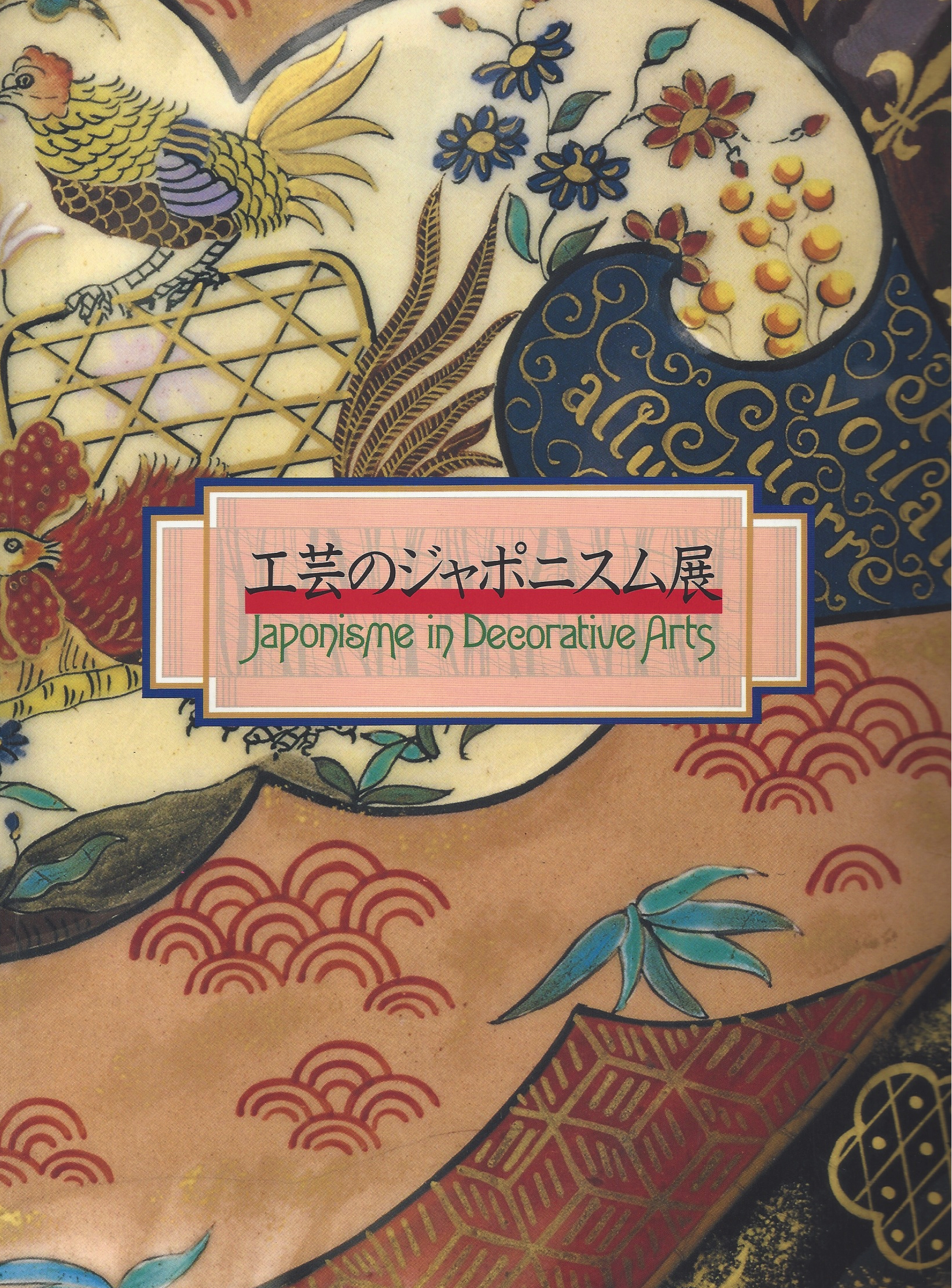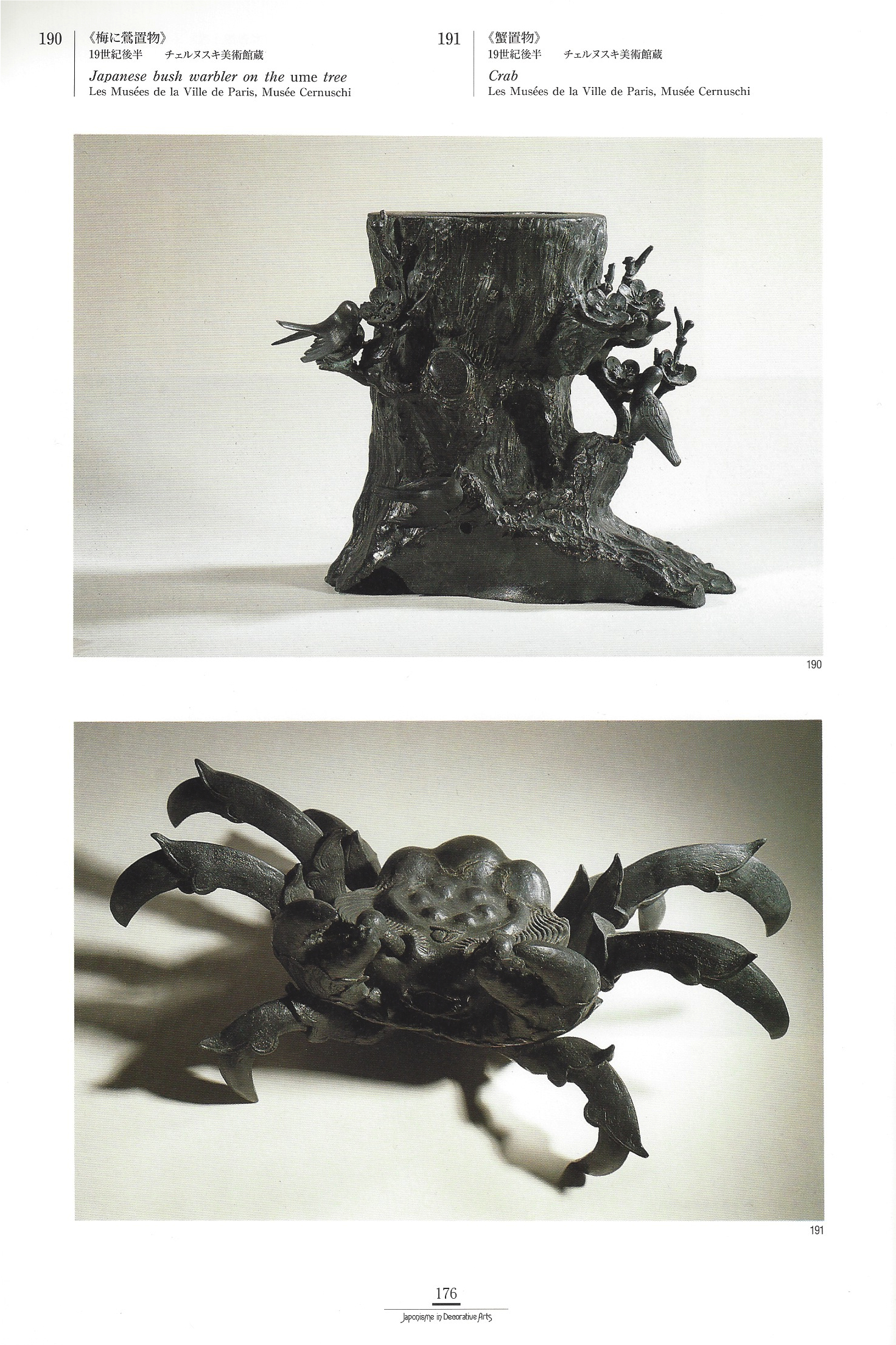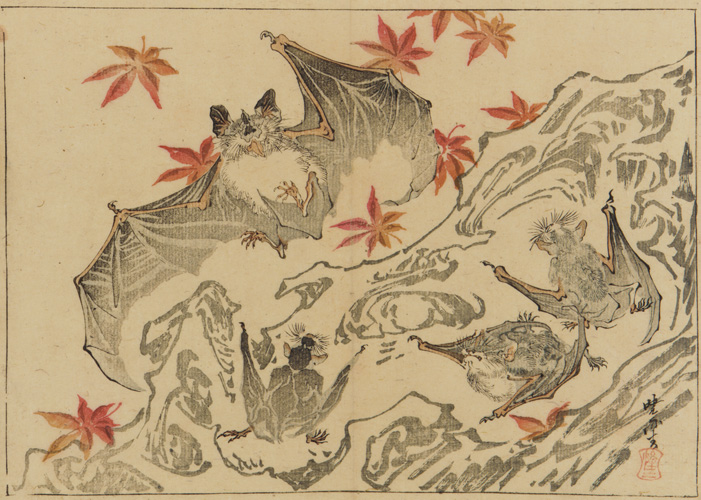Each cast as naturalistic tree trunk bases with blossoming branches,
with applied bats in flight
Each: 14 in (35.6 cm) high
cf. Japonisme in Decorative Arts, exh. cat., Metropolitan Teien Art Museum, Tokyo, 1998, p. 176, no. 190In 1868, the Meiji Restoration brought sweeping changes to Japan as the country sought to modernise itself and compete with western powers. Rather than westernise wholesale however, the country drew upon its own traditions to create a modern nation that remained intrinsically Japanese. Nowhere is this blend more clearly seen than in the ornamental art created for export in this period.
Traditionally, a Japanese samurai warrior wore two swords as a badge of rank, and over the centuries craftsmen had developed the decoration of these swords and their fittings (tsuba) into a fine art in itself. These fittings were often cast in bronze and decorated with inlays of patinated alloys. The most popular of these alloys were shibuichi, which was grey or green, and shakudo, which could be pickled to a rich black, said to resemble ‘the colour of a crow’s wings in the rain’. These pieces were further embellished by inlays of gold, silver, and copper.
However, after the Meiji Restoration, the samurai were gradually stripped of their powers, and were banned from wearing swords in 1876. With the domestic market for their art gone and faced with an unfamiliar and competitive international trading market, traditional craftsmen found their livelihood potentially in danger. But in fact their skills became a key part of Japan’s highly successful export trade to western markets.
This pair of interesting vases illustrates the fascinating fusion of traditional Japanese techniques and themes. The decoration is inspired by naturalistic Japanese motifs with an emphasis on respect for nature, combining animals with plants. Rather unusual is the use of bats as opposed to the typical reptiles, insects or birds. Bats (koumori) symbolise happiness and good luck in which health, long life and wealth remain important aspects in Japanese culture. The Okinawa region in Japan is where bats are common and regularly used as a motif, more so on religious structures or altar accessories. A Japanese woodblock print by Kawanabe Kyosai from this period (held in the Smithsonian Museum of Art) shows a similar subject matter as seen on these pair of vases. Other French artists of the Art Nouveau period, such as Emile Gallé and Daum Nancy, used bats as decoration on their pieces of glass. Thus, these vases could have been produced to appeal to the tastes of the Western market as well.
A similar bronze vase may be found in the collections of the Musée des la Ville de Paris, Musée Cernuschi.


























